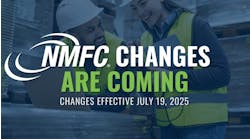We repeatedly hear the dangers of “distracted driving,” when our attention is diverted by cell phones, radios or conversations away from the safety task at hand.
For instance, a truck driver can watch the oncoming traffic at an intersection, timing a left-hand turn, but nearly hit the motorcycle directly in from of them. Or, a commercial cargo airplane pilot could keep a close eye on his gauges – altimeter, wind speed, angle of descent – but still fly directly into the ground.
These real-life examples tell us that even when we are intently focused on the road ahead we can fail to take important actions or miss critical information. Looking is simply not the same as seeing.
In 1992, professors at Massachusetts Institute of Technology labeled these episodes as “attentional blindness.” (Others have labeled this “inattentional blindness.”) In experiments they showed how our “mind’s eye” controls our actual vision, causing our focus and expectations to make us unaware of objects in plain sight.
Want to test your own awareness? Watch this video:
Neuroscientists and cognitive psychologists tell us that we cannot absorb and retain every stimulus bombarding our senses. And that’s a good thing – otherwise, we would be overwhelmed by incoming data and not get anything done. Instead, our intent prioritizes what we see and our expectations “fill in the gaps” to complete a seamless experience.
So, if intent says that airplane gauges are important to safety – and they are – the pilot can be “distracted” from actually flying the plane. And if the truck driver’s expectations are that a motorcyclist will quickly dart through traffic, he may literally not see that the cycle is still right there in front of the truck.
The fact is that “looked-but-didn’t see” accidents do occur, even when objects are in plain sight. The cause: focusing on other safety tasks, combined with objects or events outside of expectations. The sad irony is that because of expectations, experts – like professional drivers or airline pilots – may be more susceptible to attentional blindness than beginners.
Is there a cure for attentional blindness? No. Again, as humans, we need a means to sort out what is important to our task at hand. But there are steps any professional driver can take to minimize driving while attentionally blind:
- Maximize your attention: Eliminate distractions unrelated to safety – put that cell phone away. Then realize that safety-related technology itself can distract. That navigation system, the lane departure warning, the automatic cruise control are there to supplement your safe driving, not to replace it. You are still the pilot.
- Drive for others: You are the professional. Pay attention to what others may not notice so that you are not caught up in their own attentional blindness. Use signals to alert, and awaken, others. Watch for distracted drivers. Leave space in anticipation of the unexpected from the non-professional driver.
- Take cues from your surroundings: Road signs often warn of potential hazards – “Children At Play,” “Blind Pedestrian Xing” – bringing those possibilities into our range of expectations. But surroundings themselves offer cues of what may occur. Forested rural roads mean deer – with or without the warning sign. Agricultural areas mean animals or farm tractors. City lights ahead signal the increased possibility of people wearing earbuds and looking at their cell phones crossing the street. Re-focus with each change in your surroundings.
Look again at the video above. Now you cannot help but see the moonwalking bear! Your focus and your expectations have changed. Use that increased awareness on the road and avoid driving attentionally blind.
Steve Vaughn is vice president of field operations for HELP Inc., the provider of the truck weigh station bypass system PrePass as well as toll payment and trucking data visualization technology. He previously served with the California Highway Patrol and is a past president of the Commercial Vehicle Safety Alliance.



